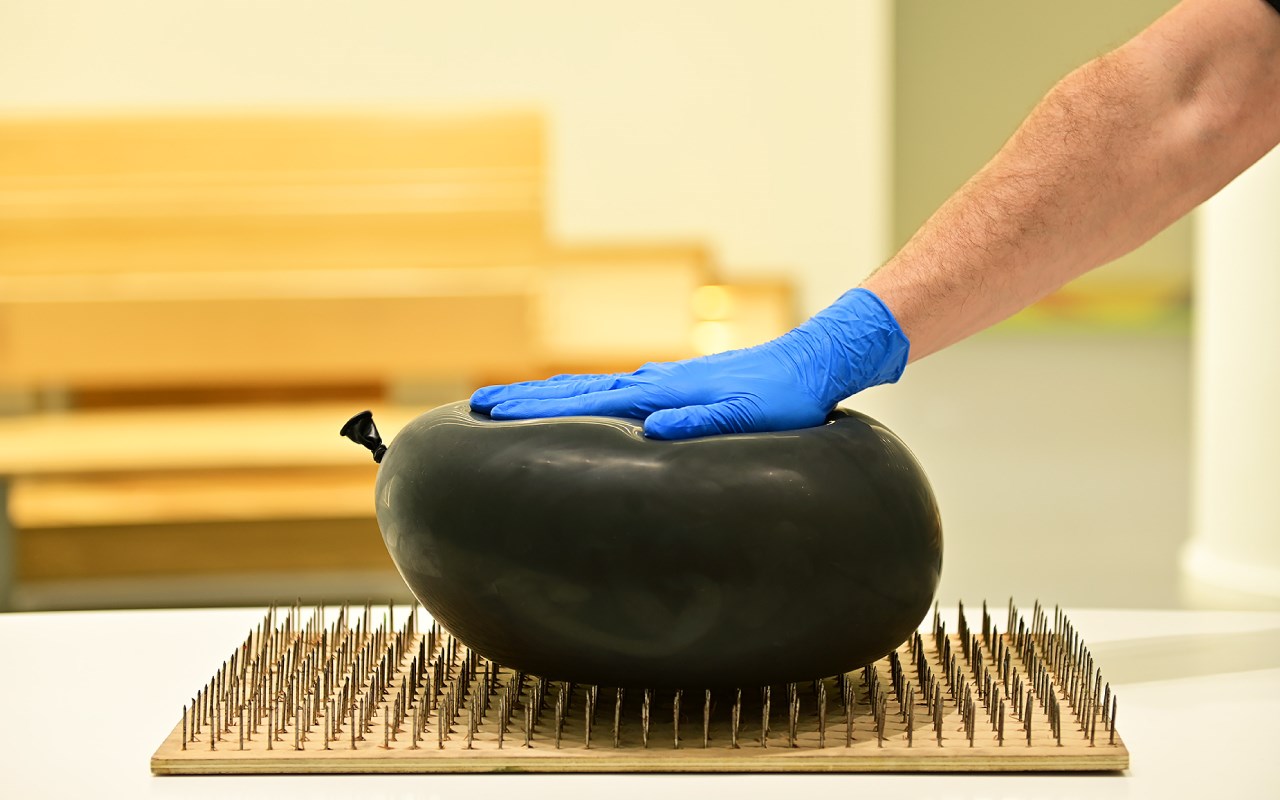stc
Pressure
Physics demonstrations | 2nd grade of Gymnasium

Required, call 210 9469641, Monday to Friday, 9:30-16:30
60 minutes
The dates and times shown are indicative and can be altered upon request in advance. Any science experiment demonstration can be arranged to take place between Monday and Friday from 09:00 to 15:00.
120 students
Students of 2nd Grade of High School/Gymnasium (only school groups)
Introduction to the concepts of pressure, atmospheric and hydrostatic pressure, Archimedes’ and Pascal’s Principles, floating and sinking.
Would you lie on a bed of nails? What will hurt more, an elephant standing on your foot or a woman with high heeled shoes? Is atmospheric pressure high or not? Why do your ears pop when you travel to the mountains or go in a plane? Why do your ears hurt when you dive deep underwater? What did Archimedes realize when he run through the streets of Syracuse naked yelling “Eureka!” Why does a stone sink in water while a ship doesn't? How do objects float? How does a submarine submerge? How is a hydraulic jack able to lift a heavy weight with a small input?
The objectives of these science demonstrations are to familiarize students with the concepts of force, pressure, atmospheric and hydrostatic pressure, Archimedes’ and Pascal’s Principles, buoyancy, floating and sinking. By participating in this science show students will be able to make connections between science and everyday life phenomena as well as between science and technological applications.
Topics Covered
- Pressure
- Atmospheric pressure
- Hydrostatic pressure
- Communicating vessels
- Pascal’s Principle
- Buoyancy
- Archimedes’ Principle
- Floating and sinking
- Density
Objectives
Introduction to fundamental concepts of classical mechanics like force, pressure, atmospheric and hydrostatic pressure, Pascal’s and Archimedes’ Principles, communicating vessels.
Demonstrate complex concepts in a simple and understandable way.
Develop critical thinking.
Make connections between science and technology.
Make connection between physics and everyday life phenomena.
stc


